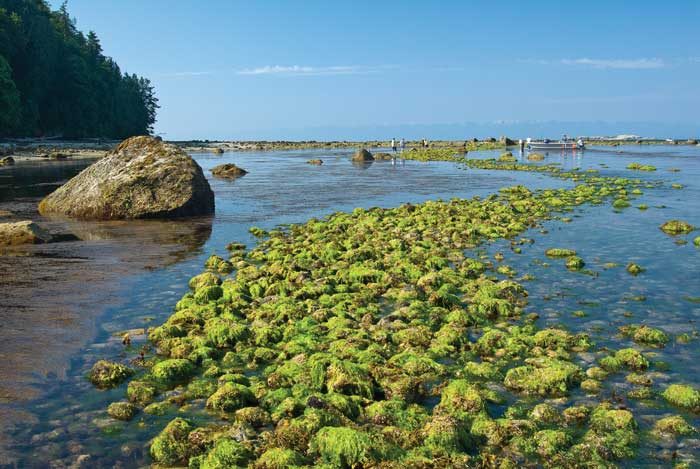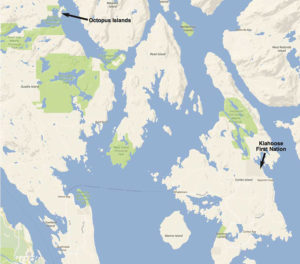Clam gardens were seaside farms
Most of Bailey Mckittrick’s summers have been spent on Octopus Island, one of many islands in a chain that includes the BC provincial marine park with the same name. It was here, in the northernmost part of the Salish Sea watershed, that she and her grandfather found a clam garden. The regular Sentinel reader sent this article from her home in California.
For the Coast Salish people, shellfish has served as a staple food source for over 5,000 years, supporting communities from Alaska through British Columbia and into Washington.
Indigenous people were once considered to belong to hunter-gatherer societies, but recently there have been discoveries made that counter this theory. One discovery was evidence that suggests Indigenous communities did not just gather Butter clams (Saxidomus gigantea), but actually farmed these intertidal mollusks.
Clams thrive in sheltered, soft-sediment beaches and bays. Along the coast, many locations have been found where Coast Salish ancestors created ideal environments for clams to grow. These are known as ‘clam gardens’.
One of these clam gardens can be found on Octopus Island, a place I am very familiar with and have traveled to every year since I was four. The marine life on Octopus Island has always fascinated me. As a little girl, my grandfather and I would go ‘low-tiding’ every day, looking at all of the intriguing life that thrived in and around the ocean. Perhaps one of the most interesting sites to be discovered was an ancient clam garden.
At the clam garden, you can see that the largest boulders along the shore were once moved to the edge of the tidal zone and set in a row to form a rock wall, like a fence, along the low-tide water line. This rock wall protected the sediment and shell fragments in the intertidal zone from washing away, while still allowing for the high tidal current to flow up through the cracks and carry nutrients to the clams.
When the tide comes in, the butter clams are free to move around and feed on phytoplankton through their siphons in these calm pools. The removal of stones from the beach to build the rock wall also allowed for the cultivation of a large, sandy bed, which supported both the growth and harvesting of these clams.
Amazingly, studies have shown that these ancient marine farming techniques yield up to four times more butter clams than ‘wild’ methods.






